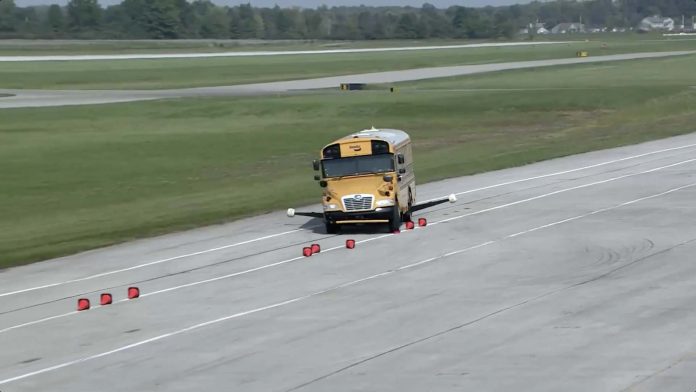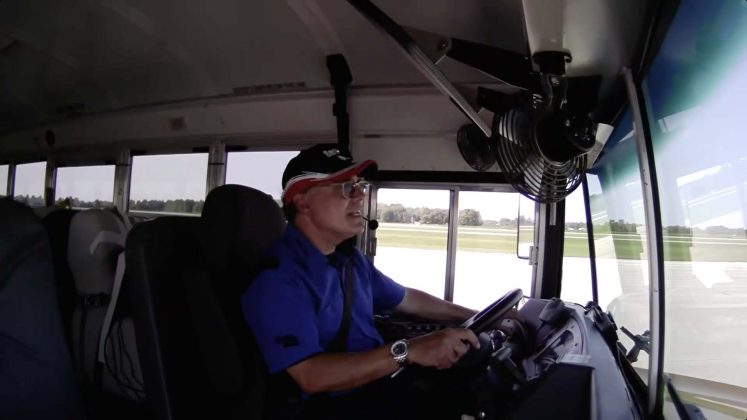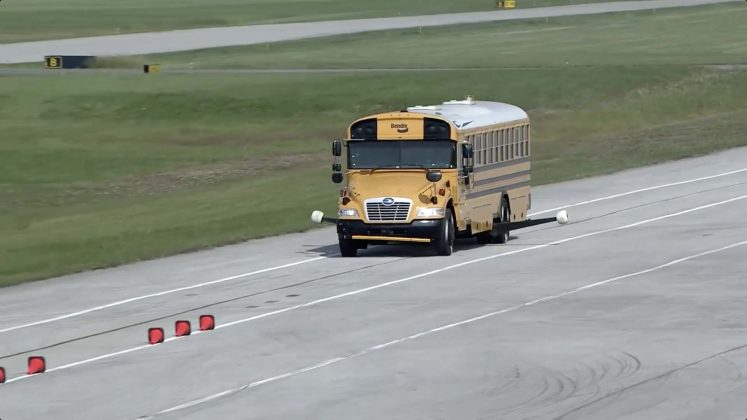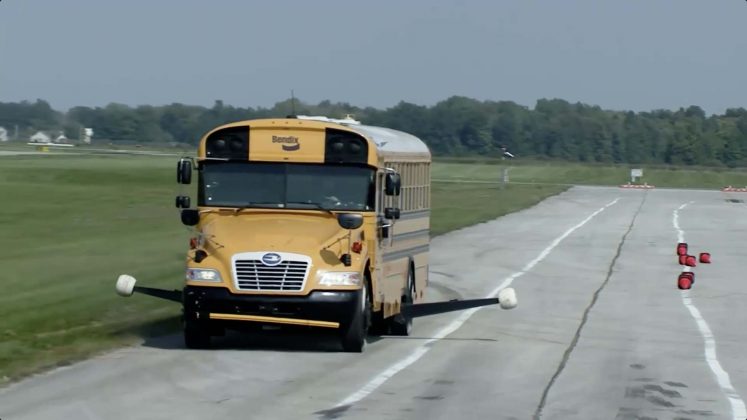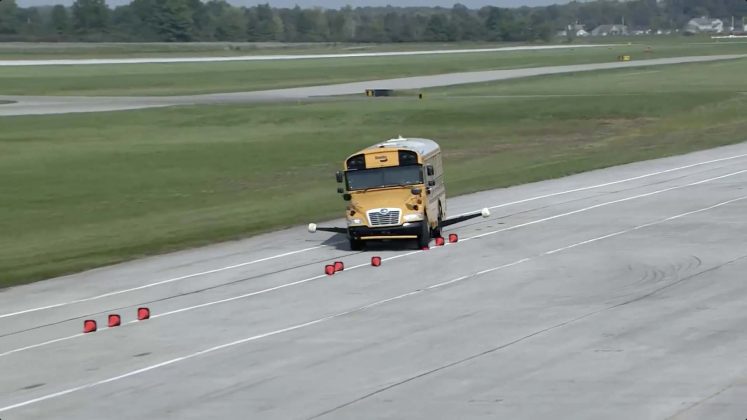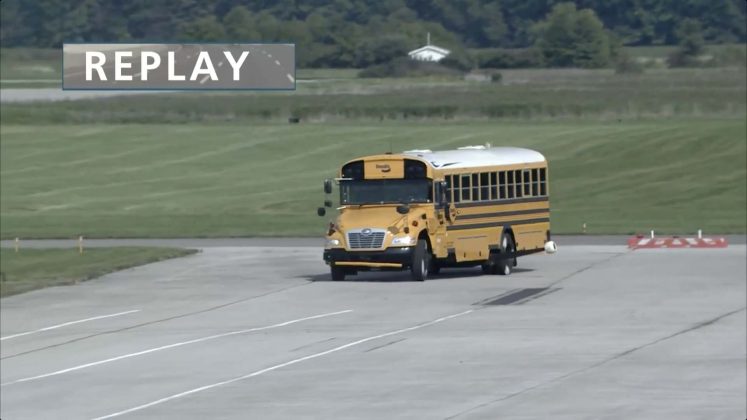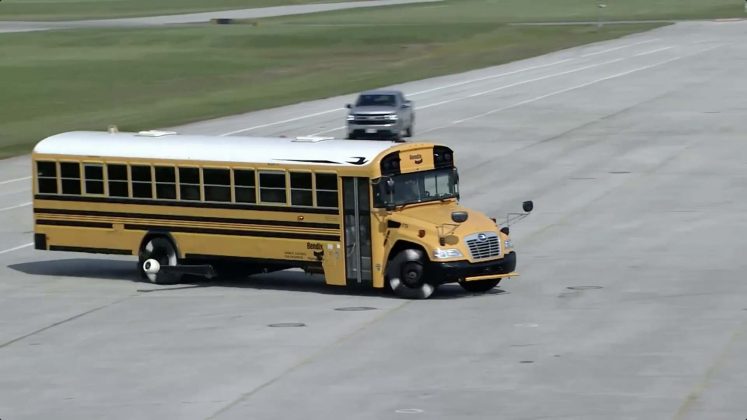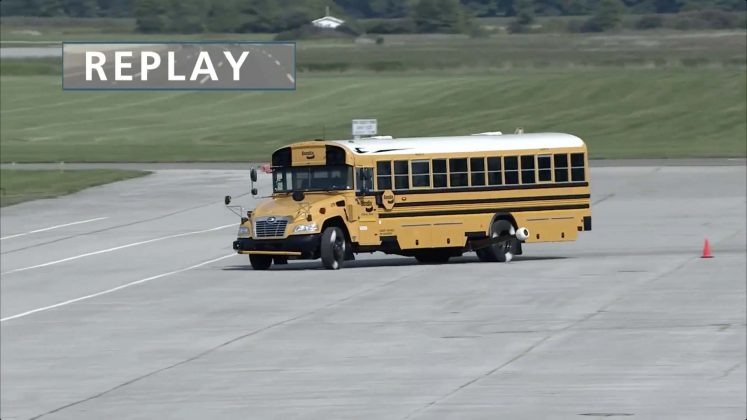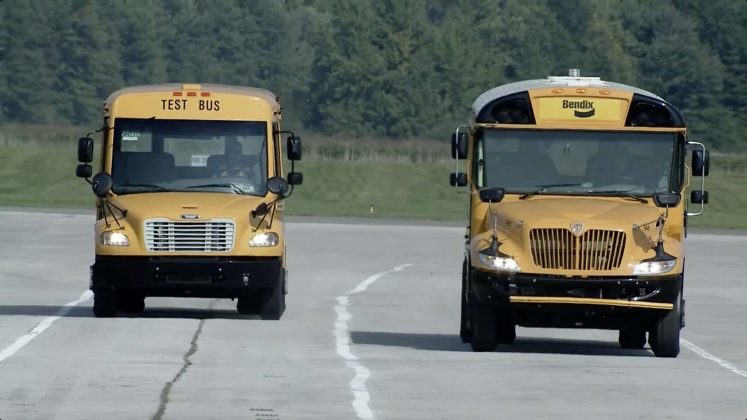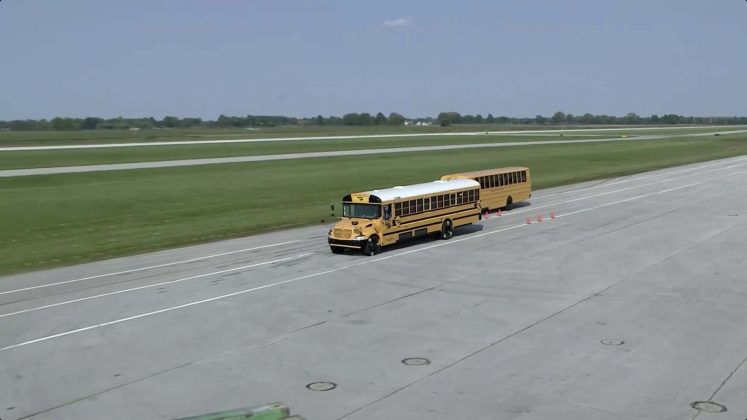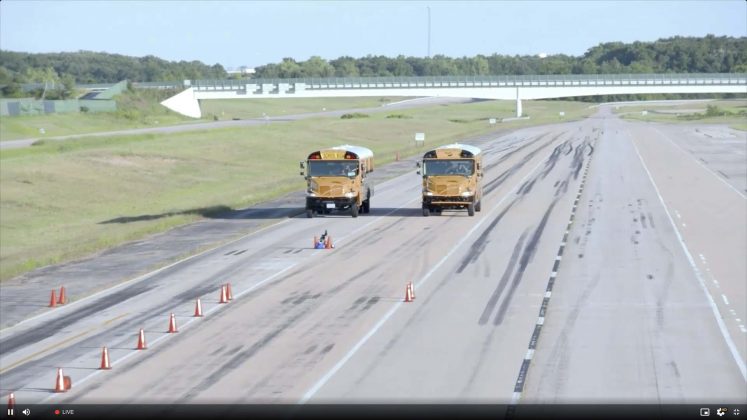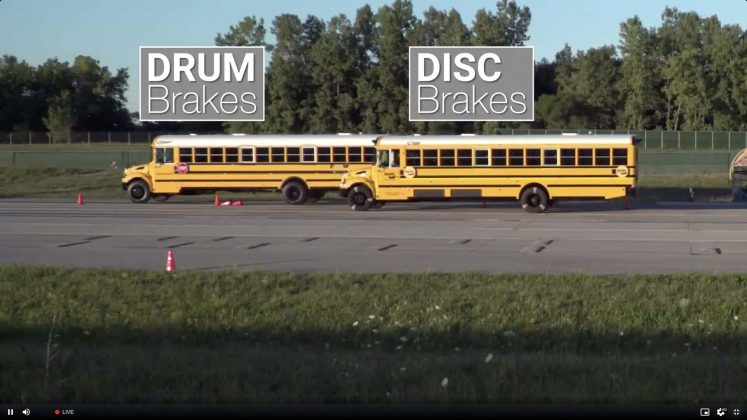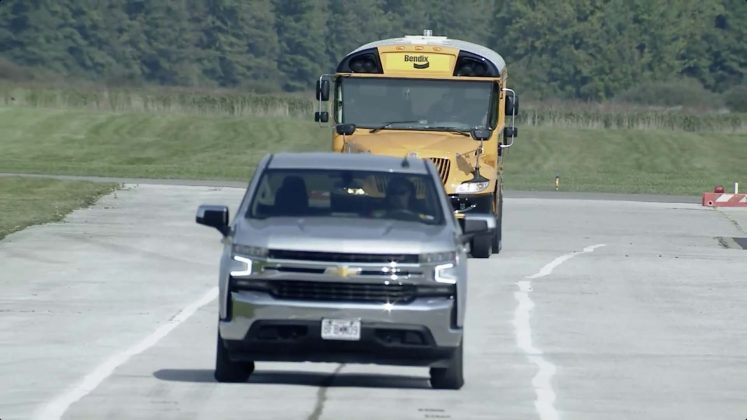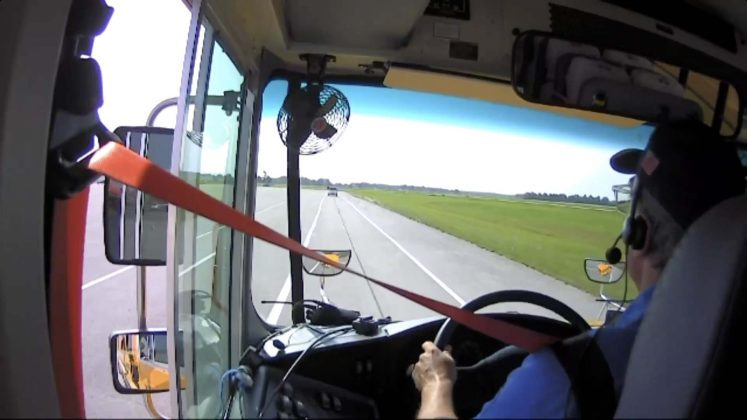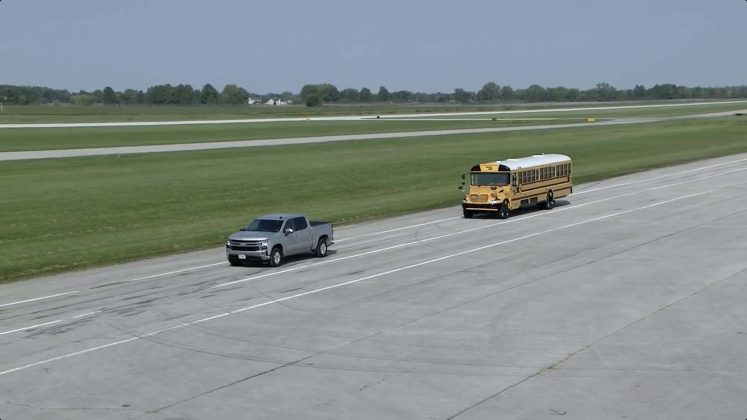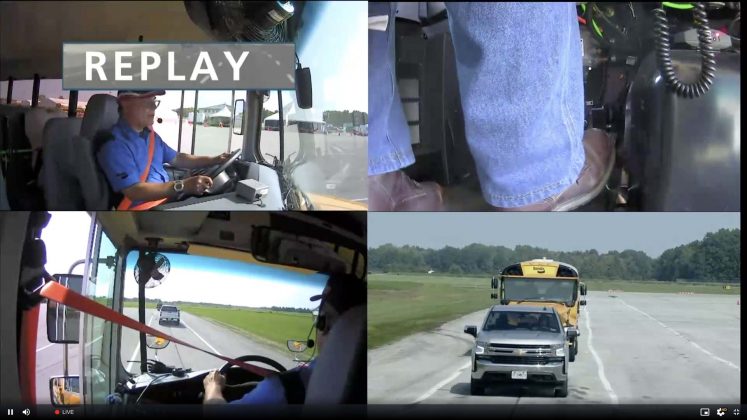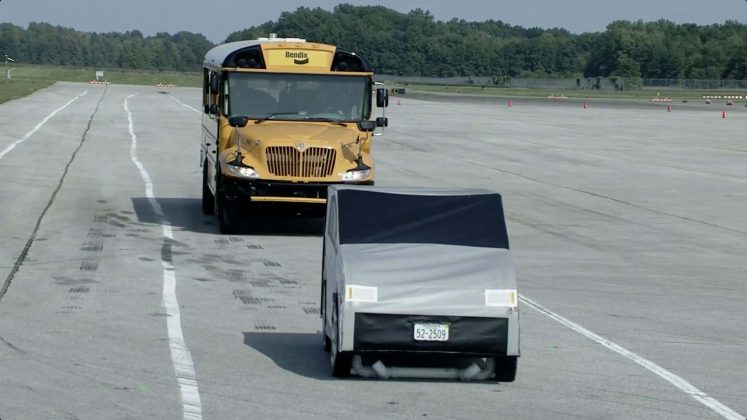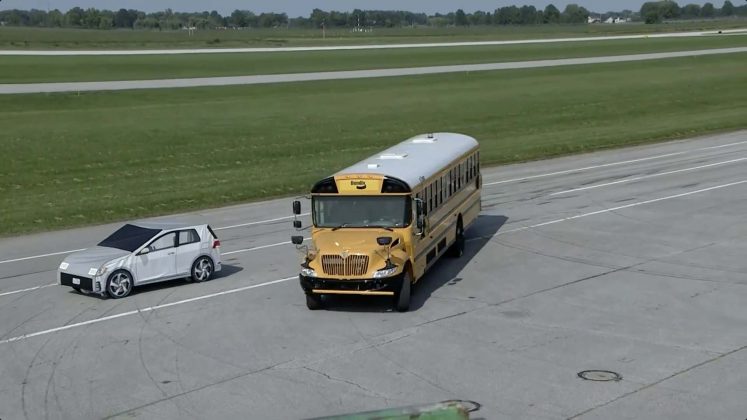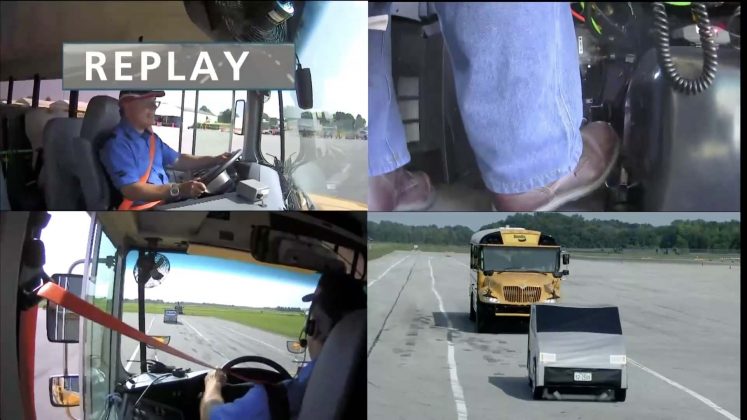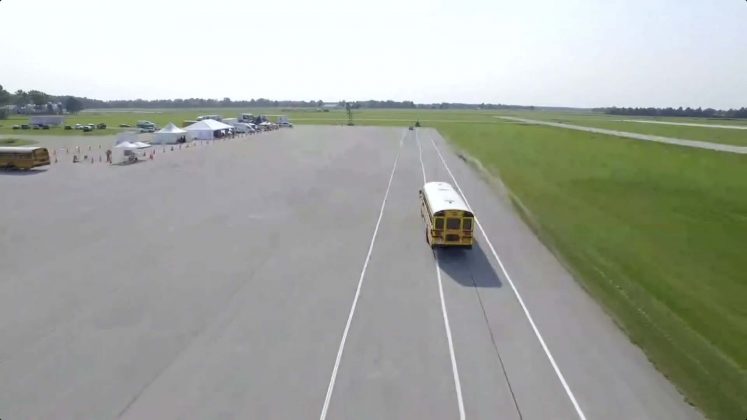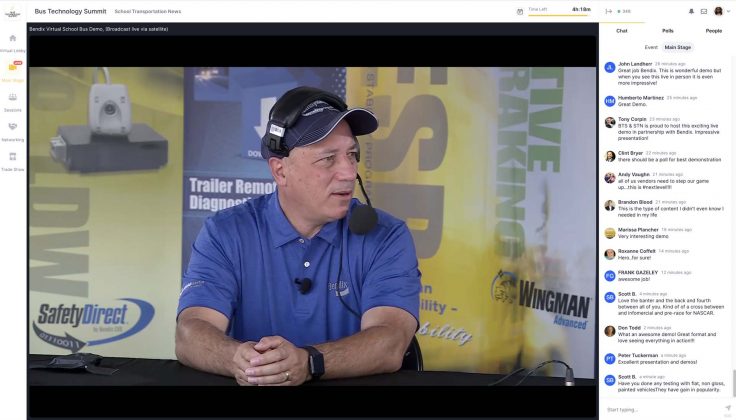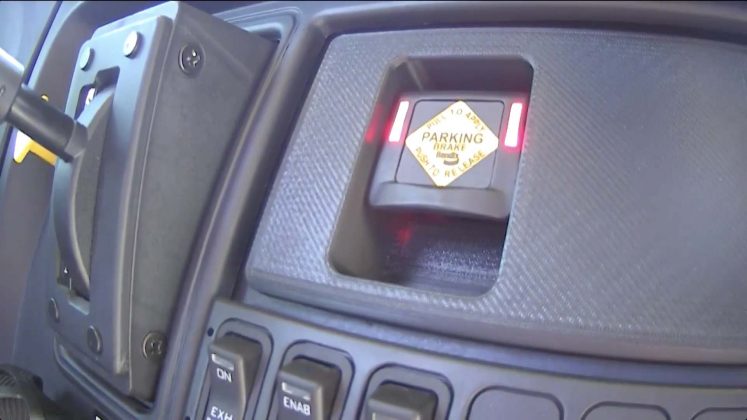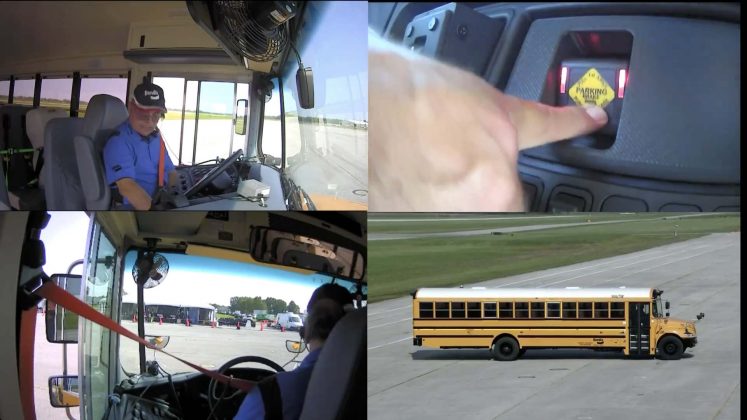In a Sept. 24 livestream watched by over 1,400 people during the virtual Bus Technology Summit, Bendix Commercial Vehicle Systems broadcast multiple demonstrations of how various brake and collision mitigation technologies benefit school buses.
Frederick Andersky, Bendix’s director of marketing and customer solutions for controls as well as director of government/industry affairs and marketing, drove school buses equipped with the safety solution and that carried 25 water containers of about 250 lbs. each that stood in for students.
Broadcasted live from an Ohio airport, the first demonstration was of the Avoidance Maneuver that simulated a bus driver swerving to avoid a person or object on the road and trying to regain control. Andersky commented that this type of situation was demonstrated in the 2016 Chattanooga school bus crash in Tennessee that killed six students and injured 23 others.
The Bendix stability control system applies different brakes as needed to help the driver maintain control, Andersky explained.
For the next maneuver, he took a school bus around a J-curve at 30 to 35 mph. The Bendix ESP system slowed the bus down. The system applies the brakes or simply reduces the throttle, and drivers will feel the effects as they try to turn the wheel, Andersky said.
Watch the J-curve test below:
TJ Thomas, the director of marketing and customer solutions for Bendix and one of several company officials to provide commentary during the event, advised fleet managers to do maintenance on the brake system as well as the bus tires for optimal performance.
The next segment showed the improved stopping distance of air disc brakes compared to drum brakes.
Pre-recorded tests showed that the bus with drum brakes traveled farther after each hard stop, while the air disc brake-equipped bus stopped short each time. Nicole Oreskovic, Bendix’s vice president of product planning and sales operation, attributed the discrepancy to drum brakes heating up and failing to properly function as the bus is continually operated at higher speeds.
“You want to make sure you don’t have fade when you’re driving a school bus,” Andersky cautioned.
Oreskovic also noted that air disc brake maintenance is less expensive and time-consuming than that of drum brakes.
Related: Texas Autonomous Vehicle Task Force Will Work with School Bus Companies
Related: STN EXPO: Autonomous School Bus Future Must Include Human Drivers
Related: Bendix Employees ‘Get Involved’ with Program that Funds Innovative Nonprofits
Related: Jury Finds Chattanooga School Bus Driver Guilty of Negligent Homicide
Bendix also demonstrated two collision mitigation systems. Wingman Advanced uses radar only while Wingman Fusion uses radar and camera. They both help in a distracted or drowsy driving situation, Andersky explained, providing an alert so the driver has time to slow or swerve. Thomas likened it to a best friend always looking out for the bus and its occupants.
“These are driver assistance technologies, not driver replacement technologies,” Andersky cautioned. “Drivers are still important.”
In a “rapid approach” test, Andersky drove toward a truck traveling in front of him on the track. The Wingman Fusion system gave him an alert before overtaking the bus. It didn’t stop the bus, but it slowed its speed to match that of the truck.
In a “stationary vehicle braking” test, Wingman Fusion cut the throttle as Andersky’s bus approached a vehicle stand-in on the track. Fusion is beneficial since it adds radar to the camera, giving two sources of info, he said.
For the system to kick in, the radar must sense a metallic obstruction in the roadway. The object must also look a vehicle, Thomas said.
Andersky confirmed that the system recognizes objects “of size” so it doesn’t engage when detecting smaller objects. For an object about the size of a license plate, the driver will at least receive an alert, Thomas said.
Thomas said Fusion’s camera is located in the top center of the windshield. It can be affected by snow or ice so it should be included as a pre-trip inspection item. if it’s obscured, Thomas explained that it shows a fault warning on the driver dash.
Watch the Rapid Approach test below:
In a lane departure warning test, Fusion gave a visual and audible alert when the driver strayed out of his lane. However, the passive system did not intervene by taking control of the vehicle.
“Really highlighting the camera, reading the lines on the road,” Andersky noted.
Intellipark is an intelligent parking brake system designed to mitigate vehicle rollaways that could result from accidentally disengaging the parking brake. No association or government group monitors rollaway crashes the way the other motor vehicle crashes are counted, Andersky noted, but the incidents occur all too frequently.
Used if the driver forgets to engage the parking brake and opens the door to leave the vehicle, the Intellipark system activates and stops the bus from rolling backward. Andersky demonstrated that it also avoids stress on drivers’ wrists and hands because it’s easier to engage than traditional emergency brakes.
All these technologies are good driver training opportunities, Andersky noted. Thomas recommended that both drivers and mechanics get trained on these systems.


